#WWF india
Explore tagged Tumblr posts
Text
#aging#bald eagle#biodiversity#birds#candice gaukel andrews#covid 19#house sparrows#india#mammals#natural habitat adventures#nathab#nature#red deer#science#science and environment#scientific research#scotland#social connections#turkey vultures#vultures#wild#wildlife#world wildlife fund#wwf
1 note
·
View note
Text






Wrestling World presents Wrestling Maniacs: JUNE 1999
Sabu: THE SILENT KILLER!
Alongside Terry Funk, Mick Foley, and maybe Sandman, Sabu is a hardcore wrestling legend. He has always been ECW’s most well-rounded performer, willing and able to make not only himself but any opponent look good.
By Chris Faust
[If you want to see hardcore wrestling, then Sabu is your man!]
EXTREME Championship Wrestling (ECW) has a variety of reputations. Some describe it as a slaughterhouse, a kind of Ultimate Fighting organization minus the sportsmanship. Others are quick to note the technical, high-flying aspect to many ECW wrestlers’ styles. Unquestionably, ECW is violent, bloody, and bruising. But the acrobatic, high-impact, death-defying talents throughout the promotion are just as prevalent. One longtime ECW star has always performed with both of these objectives in mind. That man is Sabu, one of the most influential, mysterious, and entertaining wrestlers ever to compete in any federation.
Covered with scars from barbed wire death matches (his specialty during his early days), standing a modest 6-foot tall, and never weighing in over 225 pounds, Sabu looks like a man who has taken more punishment than he has handed out. He never speaks on camera, but communicates to the fans with his trademark index finger pointed into the air. He wrestles all the time and has a reputation for overbooking himself–some say for the money, but less cynical fans realize that very few men have surrendered themselves to the sport like Sabu.
Sabu’s wrestling style is better seen than described. He walks the line between fearlessness and complete psychosis. He is equally known for his vast arsenal of moonsaults, flips, and other top-rope maneuvers as he is for his various barbed wire, table, and chair stunts. He inflicts pain mercilessly, yet gracefully. At his ECW debut in 1993, he pinned Taz (then known as Tasmaniac) twice in one night, setting off a feud that still resurfaces periodically. His threshold for withstanding pain goes to an even greater extreme. Legend has it that once during a match against Chris Benoit, Sabu actually had his neck broken, yet still managed to finish the match.
[Sabu is one of the most downright brutal competitors ever to perform…and yes, those scars are real!]
The story behind Sabu’s rise in the American wrestling scene sounds like the stuff of legend as well. He was born in Bombay, India, the nephew of The Sheik. In 1984, after giving his nephew some training in mat technique, The Sheik announced that Sabu would compete against a mystery opponent in order to prove himself. The opponent was later revealed as The Sheik himself, but Sabu managed to pass his test one way or another.
Sabu’s professional debut came in 1985 when he defeated the Canadian Road Warrior. He then spent several years traveling the American independent circuit, making a name for himself as one of the most feared men in wrestling. He worked himself as much as possible, often wrestling six days a week, occasionally as much as three times in one day! In 1992 Uncle Sheik again helped further Sabu’s career, helping him make the jump to Japan’s FMW promotion. Sabu earned his first gold teamed with Horace Boulder (the same who now wrestles in WCW), when the two won the tag belts from Atsushi Onita and Tarzan Goto. At this point, Sabu’s growing reputation earned him a contract offer from the WWF, which he declined in favor of his interests in the Japanese scene, which included winning the IWGP Jr. Heavyweight title.
Strangely enough, less than a year later, in October of 1993, Sabu made his ECW debut. Within less than a month, he had defeated Shane Douglas to become ECW World Champion. Weeks later, Sabu staked his belt against Terry Funk’s ECW Television title, defeating Funk and claiming both belts. Ironically, Sabu lost the World title to none other than Funk in December. Sabu held the TV title a bit longer, losing it to the Tasmaniac in March of 1994.
Taz and Sabu actually managed to reconcile their differences amiably, and formed a tag team. They won the belts in early 1995 from The Public Enemy, losing them a few weeks later to Chris Benoit and Dean Malenko. THe feud between the two reignited, culminating in a much-anticipated match between the two reignited, culminating in a much-anticipated match between the two at the first-ever ECW pay-per-view, “Barely Legal,” in early 1997. Sabu’s nose was broken early in the match, but this didn’t prevent the two from putting on the most grueling, strenuous match of the card. Taz, at that time managed by Bill Alfonso, won the match by choking Sabu unconscious. After the match, Taz extended a hand to a revived Sabu, but Alfonso ruined the moment by selling Taz out and instead offering his services to Sabu.
“Under new management, as the saying goes, Sabu once again claimed the ECW World title, again defeating Terry Funk. This time, in August of 1997, it was in a barbed wire match in Philadelphia, one of the most legendary matches in ECW history, so bloody and gruesome (even by ECW standards) that it has never aired on TV.The match ended with Sabu wrapping himself in barbed wire and using himself as a lethal weapon. He and Funk were so entangled in barbed wire that after the match they had to literally be pulled apart. Less than a week later, Sabu defended the belt in a three-way dance (against Shane Douglas and Terry Funk) at the second-ever ECW pay-per-view, “Hardcore Heaven.” The Sandman interfered, and Sabu was the first to be eliminated, with Douglas going on to pin Funk and win the title.
[Sabu is known for his vast arsenal of moonsaults, flips and other top-rope maneuvers!
Manager Bill Alfonso helped Sabu capture the ECW World title!]
More recently, Sabu has paired with Rob Van Dam to form one of the greatest tag teams ECW’s ranks have known. They defeated Chris Candido and Lance Storm for the tag team titles during the timer of 1998, before the ever-present tag threat of Bubba Ray and D-Von Dudley won them in November at a Cleveland event. Since the loss, the two have regained the tag titles, and Sabu has set his sights on a third reign as ECW World Champion. His title shot was scheduled for January at ECW’s “Guilty as Charged” pay-per-view, a shot he earned by pinning current champion Shane Douglas in a non-title-six-man tag match at “November to Remember.” The two faced each other in Pittsburgh recently, where a bloodied Douglas retained his title when the match was declared a draw.
Some love him, some hate him, but no fan will deny Sabu’s influence on wrestling today. When he first hit the U.S. scene in the mid-’80s, promoters were more interested in cartoonish, buffoonish wrestlers like Hogan and the Ultimate Warrior. A wrestler like Sabu was too real, too violent, and too dangerous for mainstream audiences. So he remained in the ugly underground scene before breaking into ECW.
[Sabu walks the line between fearlessness and psychosis…and proves it with every brutal ring outing!]
Unlike many wrestlers who simply imitate their own heroes’ maneuvers, Sabu originated many of the complex moonsaults and flips in his repertoire. He brought chairs, tables, and barbed wire into ECW, and he was the first to use the chair as a springboard (like Al Snow) instead of a weapon (which is not to say he doesn’t use it as a weapon too–I saw him give One Man Gang a top rope legdrop on the face while holding a chair under the leg in question!)
Many of ECW’s top stars have recently left the promotion in favor of the big two (Bigelow, Candido, Whipwreck, Sandman), with more rumored to be on their way out (Rob Van Dam, Tommy Dreamer). Nevertheless, some tough competition remains for Sabu in ECW, in the form of Douglas and Masato Tanaka. Tanaka’s pain threshold approaches (if not equals) Sabu’s, as evidenced by the battle on the chairs with Balls Mahoney. Come to think of it, a tag team of Sabu and Tanaka could be unstoppable (in ECW or the WWF), should Van Dam decide to leave ECW.
[Unlike many wrestlers who simply imitate their hero’s maneuvers, Sabu originated many of the moonsaults and flips in his repertoire!]
Much like Kanyon, Jericho, and even Austin, Sabu is among the performers who always put on a good match, regardless of the occasion or opponent. By the time you read this, Sabu could very well have given Douglas a lesson in violence at “Guilty as Charged,” and won the ECW Championship for a third time. He deserves it, and if he doesn't win it, he should consider going after the WWF’s Intercontinental title. Alongside Funk, Mick Foley, and mauve Sandman, Sabu is a hardcore wrestling legend. He has always been ECW’s most well-rounded performer, willing and able to make not only himself but any opponent look good. All fans should point to the sky when they hear “Huka Blues” and Alfonso’s whistle going off, out of respect. Who knows which of the Sabu legends are true, whether Benoit really broke his neck, whether Alfonso really superglued him back together after the barbed wire match with Funk, but one thing is for sure, the fact that these legends even exist makes Sabu one of the most intriguing, mesmerizing, and downright brutal competitors ever to perform. And yes, those scars are real.
#Sabu#ecw#extreme championship wrestling#magazine scan#magazine transcript#Wrestling Maniacs#Wrestling Maniacs 1990s#1999#1990s
12 notes
·
View notes
Text














International Snow Leopard Day
Snow Leopards are captivating and powerful animals. However, they are also vulnerable to loss of prey and poaching. These animals are distributed sparsely across 12 different countries in Central Asia. They tend to be found in rugged, high mountain landscapes, at elevations between 3,000 and 4,500m. The key to protecting this species is raising awareness. That’s what International Snow Leopard Day is all about.
History Of International Snow Leopard Day
The first International Snow Leopard Day occurred on the 23rd of October in 2014. The main purpose of this day is to show the importance of snow leopard conservation and raise awareness about this incredible animal. The day also emphasizes the importance of taking measures to stop poaching, as well as consolidating efforts in terms of an environmental organization in the countries of the snow leopard range.
The day was initiated by the countries that encompass the snow leopard’s range. They include Uzbekistan, Tajikistan, Russia, Pakistan, Mongolia, Kyrgyzstan, Kazakhstan, India, China, Bhutan, and Afganistan. On the 23rd of October, in 2013, these countries signed the Bishkek Declaration regarding the conservation of the snow leopard. This happened in the capital of Kyrgyzstan, Bishkek, at the very first Global Snow Leopard Forum.
Fascinating Facts About Snow Leopards
Snow leopards are able to prey on animals that are up to three times their own body weight.
They have massive, thick tails, which are able to help them maintain balance and shield them from harsh weather. Their tails are almost as long as their entire body.
A study from the WWF has recorded snow leopards living at 5,859 meters above sea level. This is the highest altitude that has ever been documented for big cats. This is about the same height as the highest mountain in Canada.
You may be surprised to learn that snow leopards are not able to roar. Instead, they mew, yowl, and growl. They also prusten, which is also known as chuffing. This is a non-threatening vocalization, which is made when they blow air through their nose.
The fur on the stomach of a snow leopard is almost five inches thick. This is so that they can survive in the harsh and cold mountain climates.
These animals are often referred to as ‘ghosts of the mountain’ because they spend most of their lives in solitude and they are rarely seen.
Snow leopards are the only big cats that call Asia’s cold deserts their home. These deserts are sometimes referred to as the third pole because they feature ice fields with the biggest reserves of freshwater outside of the southern and northern polar regions.
What Threats Do Snow Leopards Face?
The exact number of snow leopards is unknown. Experts believe that there is no more than 6,390 snow leopards around the world, yet the number could be as small as 3,920. There are a number of threats that this elusive cat faces, including poaching. Data is hard to come by in this respect because a lot of trades with snow leopard parts occur in the dark. Some research shows that one snow leopard has been killed and traded every day between 2008 and 2016. However, the true extent of the issue is thought to be even bigger.
No animal should be poached, and this is why the likes of International Snow Leopard Day are so important so that we can raise awareness about the issue. Poaching is also a problem because it takes away resources for the snow leopard. The main prey species for the snow leopard are wild goat and sheep. However, these species are also threatened by unsustainable or illegal hunting in a lot of the parts of the snow leopard range. So, if there is a decline in their populations, there is also going to be a decline in the population of the snow leopard.
Snow leopards face a number of other threats that a lot of people don’t consider. For example, their mountain ecosystem could be destroyed because of large-scale developments, including mining. Climate change also poses a number of challenges as well. Temperatures are increasing in the mountains across Central Asia. This has an impact on the entire ecosystem; from water supplies to vegetation. It is certainly worrying times for snow leopards, and a good way to spend International Snow Leopard Day is by educating yourself fully on the issues these animals face.
How To Observe International Snow Leopard Day
There are a number of different ways that you can support International Snow Leopard Day. So, here are some suggestions…
Learn and explore – One of the best ways to observe International Snow Leopard Day is to learn about this incredible creature. Spend some time reading up on the snow leopard. Find out about where the animal lives, what threats they face, and what steps we can take in order to help safeguard the future of this incredible animal.
Get creative – Another way to show your support is to get creative. There are some activities online involving the snow leopard. You can find a fun activity sheet via the WWF website.
Order a WWF Explore Badge – Another way to show your support for International Snow Leopard Day is to order a WWF Badge. This is something else that you can get on the WWF website.
Adopt a snow leopard – You can also support snow leopards by adopting one. This helps the WWF to monitor snow leopard movements, by giving local communities the support needed to do this, as well as reducing human snow leopard conflicts.
Fundraise – You may also decide to host a fundraising event. This is a great way to raise awareness about the problems that snow leopards face while also accumulating donations that can go towards helping them. There are so many different ways that you can fundraise. You may decide to host a fundraising event, such as a cook-off, bake sale, or fun run. Another option is to make products that you can sell and then you could donate the proceeds or a percentage of them to helping snow leopards.
Source
#International Snow Leopard Day#23 October#Bronx Zoo#New York City#USA#summer 2019#original photography#InternationalSnowLeopardDay#outdoors#animal#flora#fauna#shy animal#tourist attraction#landmark#cityscape#nature#vacation#travel#world day#Zolli#Zoo Basel#Switzerland#Schweiz
3 notes
·
View notes
Text

The elusive #RedPanda has been spotted in the forest of #ChugValley of #ArunachalPradesh. Under the guidance of the WWF-India, the villagers of Chug have declared nearly 100 sq kms of their forest area a community conserved area (CCA) to secure and preserve the wild habitat.
3 notes
·
View notes
Text


Asia, Africa, India and Latin America
While we have been focusing on North America, the park model was actually exported throughout the world, forcing millions of tribal peoples out of their habitats/territories. The practice continues to this day in Asia, Africa and India, for example, where non-profit foundations and United Nations sponsored organizations are eagerly trying to protect what little land is left that hasn’t been destroyed by industrial modes of living.
Unfortunately, be it the Twa peoples expulsion from Congo’s Kahuzi-Biega National Park, the Maasai from the Amboseli National Park in Kenya or tribal people in southern India forced out of the Indira Gandhi National Park as part of an “eco-development” scheme funded by the Global Environment Facility, parks and conservation lands remain one more force which dispossesses tribal peoples. In Africa alone, one million square kilometers of land has been expropriated for conservation over the past one hundred years. Estimates in India range around three-quarters of a million people pushed off their traditional lands for conservation, in Africa the number is likely in the millions. Unfortunately, and ironically, land that has long been occupied and protected by indigenous peoples continues to be deemed “wild” and therefore suitable for “conservation” primarily by having them declared parks, thus making them out of bounds for the indigenous peoples who maintained them in the first place.
What happens to the people who once lived rich, meaningful lives within these habitats? They become like you and I. Dispossession leads to rootlessness, discouragement, depression, inability to be self-reliant, bad nutrition, broken communities, severed kinship ties, and anger, too often turned inward or directed to the nearest person.
I think we need to realize that dedication to creating parkland and conservation areas does not necessarily coincide with helping regenerate ways of living harmoniously with a habitat. More often than not it promotes a misanthropic outlook that posits intact, healthy land areas being by definition “human-free’’, rather than capitalism-free. We tend to ignore the fact that indigenous peoples seeking to maintain or renew their traditional life ways need to have access tothese areas, especially if the parkland in question was actually part of their traditional territory.
Even liberal organizations like UNESCO have begun to realize that there has been a negative social impact associated with many protected areas. In some places in Asia, Africa and Latin America, provisions have been made for local control so that traditional lifestyles might continue. But these tend to be limited “buffer zones”, where the original inhabitants can control “development projects”. These attempts have not succeeded.
Apparently coalitions of indigenous peoples have had some success in forcing international bodies to recognize their inherent right to manage their traditional territories. “In the 1990s, the World Wildlife Fund for Nature (WWF), the World Conservation Congress and the World Commission on Protected Areas all adopted new policies and resolutions which strongly endorse indigenous peoples’ rights and promote the co-management of protected areas, based on negotiated agreements.[8]” However, these organizations aren’t arguing for free access to one’s habitat, but to “negotiated agreements” with outsiders and centralized authority, and land bases integrated into the scheme of state regulations and subject to the pressures of politics and the market.
Regardless of some recognition, many parks and conservation areas, especially in impoverished countries, remain part of the greater theft of traditional homelands by arrogant, powerful outsiders who impose their views of what constitutes healthy habitats. It isn’t parks and conservation areas that will help stem the tide of destruction and plunder, but recognition that new ways of living are required. And these new ways can be informed by the old ways ofland based people.
#freedom#ecology#climate crisis#anarchism#resistance#community building#practical anarchy#practical anarchism#anarchist society#practical#revolution#daily posts#communism#anti capitalist#anti capitalism#late stage capitalism#organization#grassroots#grass roots#anarchists#libraries#leftism#social issues#economy#economics#climate change#climate#anarchy works#environmentalism#environment
3 notes
·
View notes
Text

frog with a mushroom growing on it. this frog was still living
photo credit: Lohit Y.T./WWF India
10 notes
·
View notes
Photo



Crown Princess Mary’s Official Engagements in March 2023:
01/03: Official Visit to India - Visit to Engineering Company Larsen & Toubro
01/03: Official Visit to India - Visit to Grundfos' Head Office in India
01/03: Official Visit to India - Reception by the Governor of the Province of Tamil Nadu
01/03: Official Visit to India - Closing Reception
07/03: Maternal Mortality Roundtable with Maternity Foundation & UNFPA
08/03: Gender Diversity Roundtable
08/03: International Women's Day
10/03: Meeting at the US Ambassador’s Residence
13/03: Meeting with Denmark's Climate Ambassador Tomas A. Christensen and Chief Climate Negotiator Maria Samuelsen
27/03: Presidium Meeting of the WWF World Wide Fund for Nature
28/03: Meeting with Crown Princess Mary Center Advisory Committee
29/03: Meeting with the Director-General of UNEP, Inger Andersen
44 notes
·
View notes
Text
An endangered red panda has given birth to two cubs in a zoo in southern Germany's Baden-Württemberg state.
The Karlsruhe Zoo announced the birth of the male and female cubs on Friday in a Facebook post. It said the birth was the first for a red panda inside the zoo.
What do we know about the offspring?
The two cubs were taken out of their den on Friday for their first checkup with a veterinarian, a zoo spokesman told the German DPA news agency.
The zoo added in the Facebook statement that they were both microchipped.
"The offspring of the red pandas are developing very well," the zoo said, adding that they were born on June 25. They currently weigh 410 and 500 grams.
"The cubs will spend the next weeks in the den and will be cared for by their mother Akuti," the statement added.
Only thousands of red pandas remain
Red pandas are among the world's endangered species, according to the International Union for Conservation of Nature (IUCN). The World Wildlife Fund (WWF) says fewer than 10,000 of them remain on Earth.
Only a little larger than a domestic cat, the pandas are also characterized by their bear-like physique and thick-russet fur.
Their name is believed to derive from the Nepali word "ponya," which means bamboo/plant-eating animals. Despite the name, they are not closely related to the bigger pandas.
The species mainly lives in the Himalayas, in countries including Nepal, India, Bhutan and Myanmar.
11 notes
·
View notes
Text
India’s climate-friendly diet, sustainable eating habits could save the planet, says WWF | Health
Considering the global demand for food production by 2050 in its latest Living Planet Report, released on Thursday, the World Wildlife Fund or World Wide Fund for Nature (WWF) called India’s food consumption pattern as the most climate-friendly among G20 nations and highlighted that India’s diet is the least harmful to the environment. If all countries adopted India’s consumption patterns, the…

View On WordPress
0 notes
Text
[ad_1] In its recently published Living Planet Report, the World Wide Fund for Nature (WWF) has highlighted India’s food consumption patterns as the most climate-friendly among G20 nations. The report emphasizes that India’s dietary choices are less detrimental to the planet, especially when addressing the anticipated global demand for food by 2050. The report asserts that if all nations adopted India’s consumption patterns, the world would require less than one Earth (specifically 0.84) to meet its food needs, marking India as a potential model for sustainable living. In stark contrast, countries such as Argentina, Australia, and the United States were identified as having the least sustainable food consumption patterns. The report warns that if all countries mirrored the dietary habits of the G20 nations by 2050, greenhouse gas emissions related to food would exceed the critical 1.5°C climate target by 263%. This would necessitate between one to seven Earths to sustain food production, highlighting the urgent need for change. A key factor in India’s commendation is its National Millet Campaign, which promotes the consumption of resilient grains like millets. These grains not only offer nutritional advantages but also adapt well to changing climatic conditions. The report advocates for a broader adoption of sustainable diets worldwide, suggesting that alternative protein sources, including legumes, plant-based meats, and nutrient-dense algae, could play a pivotal role in reducing the environmental impact of food production. The report states, “If everyone in the world adopted the current food consumption patterns of the world’s major economies by 2050, we would exceed the 1.5°C climate target for food-related greenhouse gas emissions by 263%.” In contrast, Argentina’s food consumption alone would require a staggering 7.4 Earths, highlighting its unsustainable practices compared to India’s model. Furthermore, the report stresses that achieving healthy and nutritious diets will be influenced by cultural traditions, individual choices, and the availability of food. As nations face growing pressures from climate change and population growth, India’s approach offers a sustainable pathway that could be replicated globally, reducing environmental impact while meeting the nutritional needs of the population. Click here for Latest Fact Checked News On NewsMobile WhatsApp Channel For viral videos and Latest trends subscribe to NewsMobile YouTube Channel and Follow us on Instagram [ad_2] Source link
0 notes
Text
[ad_1] In its recently published Living Planet Report, the World Wide Fund for Nature (WWF) has highlighted India’s food consumption patterns as the most climate-friendly among G20 nations. The report emphasizes that India’s dietary choices are less detrimental to the planet, especially when addressing the anticipated global demand for food by 2050. The report asserts that if all nations adopted India’s consumption patterns, the world would require less than one Earth (specifically 0.84) to meet its food needs, marking India as a potential model for sustainable living. In stark contrast, countries such as Argentina, Australia, and the United States were identified as having the least sustainable food consumption patterns. The report warns that if all countries mirrored the dietary habits of the G20 nations by 2050, greenhouse gas emissions related to food would exceed the critical 1.5°C climate target by 263%. This would necessitate between one to seven Earths to sustain food production, highlighting the urgent need for change. A key factor in India’s commendation is its National Millet Campaign, which promotes the consumption of resilient grains like millets. These grains not only offer nutritional advantages but also adapt well to changing climatic conditions. The report advocates for a broader adoption of sustainable diets worldwide, suggesting that alternative protein sources, including legumes, plant-based meats, and nutrient-dense algae, could play a pivotal role in reducing the environmental impact of food production. The report states, “If everyone in the world adopted the current food consumption patterns of the world’s major economies by 2050, we would exceed the 1.5°C climate target for food-related greenhouse gas emissions by 263%.” In contrast, Argentina’s food consumption alone would require a staggering 7.4 Earths, highlighting its unsustainable practices compared to India’s model. Furthermore, the report stresses that achieving healthy and nutritious diets will be influenced by cultural traditions, individual choices, and the availability of food. As nations face growing pressures from climate change and population growth, India’s approach offers a sustainable pathway that could be replicated globally, reducing environmental impact while meeting the nutritional needs of the population. Click here for Latest Fact Checked News On NewsMobile WhatsApp Channel For viral videos and Latest trends subscribe to NewsMobile YouTube Channel and Follow us on Instagram [ad_2] Source link
0 notes
Text
World Land Trust: A Charity Dedicated to Conserving the World’s Most Precious Habitats
The World Land Trust (WLT) is a UK-based conservation charity with a mission that resonates globally: to protect the world's most endangered habitats and their species by acquiring and managing land. Founded in 1989, the WLT has been at the forefront of habitat conservation, helping to secure over 2.4 million acres of land in over 20 countries. The trust works with local conservation organizations to ensure the protection of crucial ecosystems while empowering local communities. This article delves deep into the importance of the World Land Trust's work, its impact, and why supporting this charity is vital for preserving biodiversity. world land trust charity.
Understanding the World Land Trust’s Mission
The World Land Trust's core objective is to raise funds to buy and protect land in areas of significant ecological importance. By partnering with local conservation groups, the WLT ensures that land is purchased and sustainably managed for long-term conservation.
Key aspects of the WLT’s mission include:
Biodiversity Protection: Safeguarding ecosystems that host an array of endangered species. Many of these areas are under constant threat from deforestation, development, or agricultural expansion.
Sustainable Land Use: Working with local communities to create sustainable livelihoods that harmonize with the protection of these areas, ensuring that both nature and people can thrive.
Long-Term Conservation: Ensuring that the acquired land is protected indefinitely, through the establishment of nature reserves and sustainable management practices.
The beauty of WLT’s approach lies in its collaboration with local communities and conservationists. This creates a sense of ownership and stewardship among the people who live in these regions, ensuring that the land is cared for in perpetuity.
Why Protecting Land is Essential
As the global population continues to grow, human activities are increasingly encroaching upon wild areas. Forests are cleared for agriculture, wetlands are drained for urban development, and species are pushed to the brink of extinction. This rapid habitat destruction has catastrophic effects on biodiversity.
According to the World Wildlife Fund (WWF), we have lost 60% of the world’s wildlife populations since 1970 due to habitat loss, climate change, and pollution. Protecting land means protecting the homes of the species that depend on these ecosystems for survival.
The World Land Trust focuses on regions that are particularly rich in biodiversity and where ecosystems are in grave danger of disappearing. The acquisition of land is one of the most effective ways to halt deforestation, habitat destruction, and species extinction.
The World Land Trust’s Projects
Over the past three decades, the WLT has successfully initiated and managed several landmark conservation projects worldwide. Let’s take a closer look at some of their most impactful efforts:
1. Rainforest Conservation in Ecuador
Ecuador is home to some of the most biodiverse rainforests on Earth. However, it is also a region that faces immense pressure from agriculture, logging, and oil extraction. The World Land Trust has been instrumental in establishing reserves in partnership with local organizations such as Fundación Jocotoco.
The Rio Canandé Reserve, for instance, is a key area that WLT has helped protect. This region is part of the Chocó forest, one of the most diverse and yet one of the most threatened ecosystems on the planet. By purchasing land, the trust has safeguarded species such as the jaguar, the critically endangered brown-headed spider monkey, and countless bird species.
2. Saving Asia’s Tropical Forests in India and Malaysia
WLT has worked on several significant projects in Asia, notably in India and Malaysia. In India, the trust has partnered with the Wildlife Trust of India to protect crucial elephant corridors. Elephants in India face constant threats from habitat fragmentation and human-wildlife conflict. By securing these corridors, WLT ensures that elephants and other wildlife have safe passage between fragmented habitats.
In Malaysia, WLT has helped to preserve the rainforests of Borneo. The Kinabatangan floodplain is a vital area for the endangered Bornean orangutan, pygmy elephants, and other species. The purchase and protection of land here ensure that these iconic animals have the habitat they need to survive.
3. Patagonia Conservation in Argentina
The Patagonia region of Argentina is one of the last great wildernesses on Earth. With its vast grasslands, mountains, and coastlines, it’s home to an array of wildlife, including guanacos, pumas, and the Andean condor. However, overgrazing, mining, and agriculture are slowly eroding this precious ecosystem.
WLT’s partnership with Fundación Patagonia Natural has helped secure vast tracts of land in Patagonia. These lands are now part of the Patagonia Wildlife Sanctuary, ensuring that they remain protected from development and degradation.
4. Saving Africa’s Savannahs in Kenya and Zambia
Africa’s savannahs are iconic landscapes, home to some of the world’s most famous species such as lions, elephants, and rhinos. Yet, these habitats are under constant threat from poaching, agriculture, and human settlement.
In Kenya, WLT has worked with Maasai Wilderness Conservation Trust to protect the lands of the Maasai people while securing critical wildlife corridors for animals like elephants and lions. In Zambia, WLT’s partnership with Wildlife and Environmental Conservation Society of Zambia has helped to create nature reserves that protect the country’s rich biodiversity, including endangered species such as the African wild dog. ummah welfare trust.

5. Forest Protection in Vietnam
Vietnam is a country rich in biodiversity, but its forests have been severely degraded by logging, agriculture, and development. The Khe Nuoc Trong forest, located in central Vietnam, is home to species like the critically endangered saola, often called the "Asian unicorn."
Through its partnerships, WLT has supported the protection of this forest, ensuring that logging and poaching are controlled, and species like the saola and the endangered red-shanked douc can thrive.
The Urgency of Climate Change and the Role of Land Conservation
Climate change poses a significant threat to ecosystems worldwide. Rising temperatures, changing precipitation patterns, and extreme weather events are accelerating habitat destruction. The World Land Trust recognizes the intrinsic link between land conservation and climate action.
Forests and other ecosystems play a vital role in absorbing carbon dioxide, a key greenhouse gas driving climate change. By protecting forests and restoring degraded landscapes, WLT helps mitigate the effects of climate change. The organization is also involved in reforestation projects, which help to restore carbon sinks and improve the resilience of ecosystems to climate impacts.
How You Can Support the World Land Trust
Supporting the World Land Trust is one of the most direct ways to contribute to global conservation efforts. There are several ways you can get involved:
1. Donate
The simplest way to support WLT is through financial donations. The trust has a range of donation options, from one-time contributions to monthly giving. WLT also runs specific appeals for urgent projects, allowing you to contribute directly to the protection of particular habitats. best charity shops london.
2. Carbon Offsetting
WLT offers individuals and companies the opportunity to offset their carbon emissions through its Carbon Balanced program. This program allows participants to offset their emissions by funding the protection of forests, which absorb carbon dioxide.
3. Buy an Acre
The Buy an Acre program allows donors to directly fund the purchase of land in endangered ecosystems. For as little as £100, you can buy an acre of land and help to protect it forever.
4. Fundraising
Many individuals and organizations choose to fundraise on behalf of WLT. From sponsored events to corporate partnerships, there are numerous ways to raise funds to support this vital cause.
5. Legacy Giving
Leaving a legacy to WLT in your will is another powerful way to ensure the protection of the planet’s most important habitats. Legacy gifts allow WLT to plan for the future, ensuring that critical ecosystems continue to be safeguarded for generations to come.
Why Your Support Matters
The World Land Trust is a highly effective organization with a clear and impactful mission. The land it protects is home to some of the most endangered species on the planet, and its approach to conservation ensures that these lands are managed sustainably and in collaboration with local communities.
As habitat loss and climate change continue to threaten the planet’s biodiversity, the need for organizations like the World Land Trust has never been more urgent. Supporting WLT is an investment in the future of our planet, helping to secure the survival of species and ecosystems that might otherwise be lost forever.
Final Thoughts
The World Land Trust’s work goes beyond just saving land—it’s about protecting the intricate web of life that depends on these habitats. scope charity
By securing critical ecosystems, WLT is playing a crucial role in the fight against biodiversity loss and climate change. Whether you choose to donate, offset your carbon footprint, or spread awareness, supporting WLT is a step towards a more sustainable and harmonious world for all living beings.
0 notes
Text
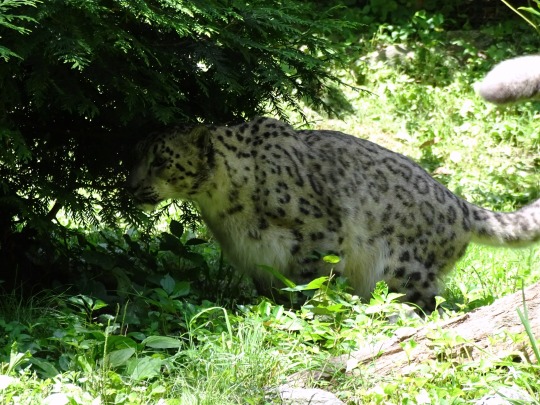
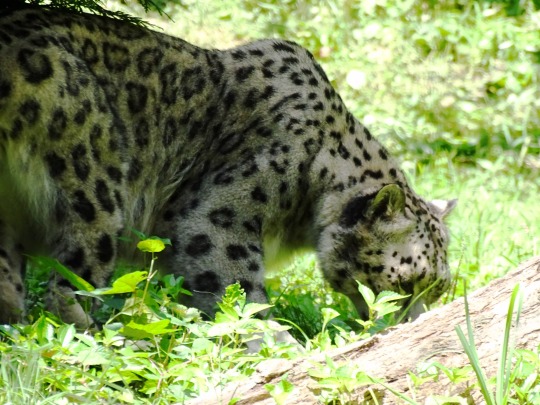
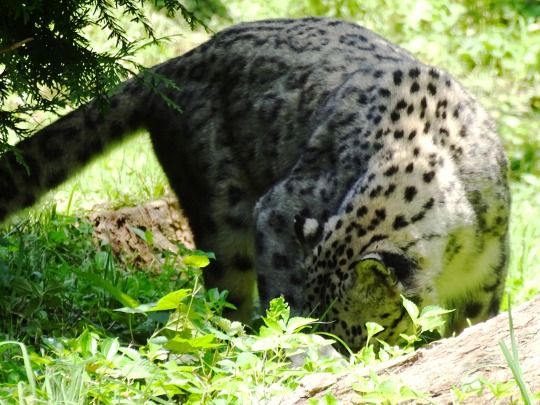

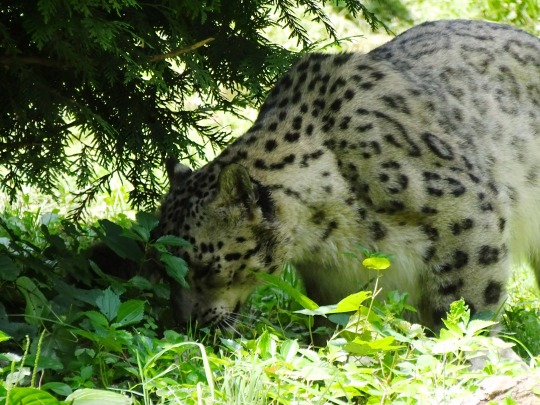



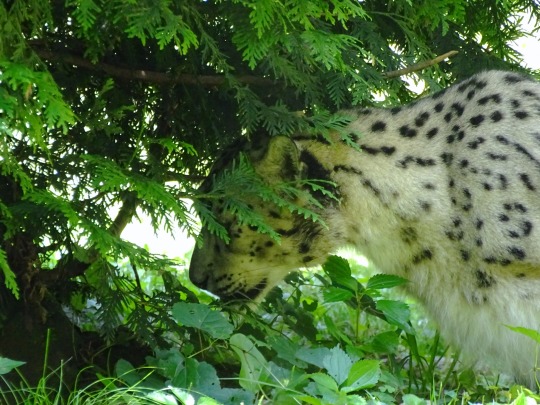
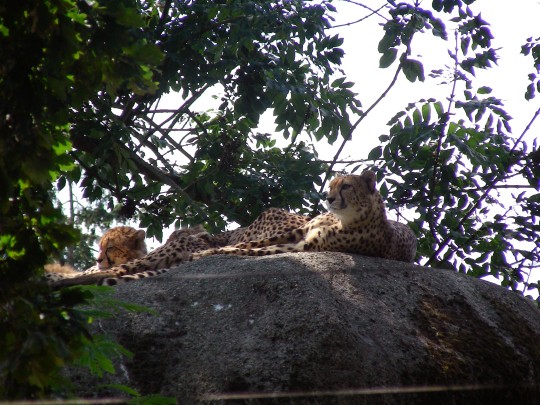
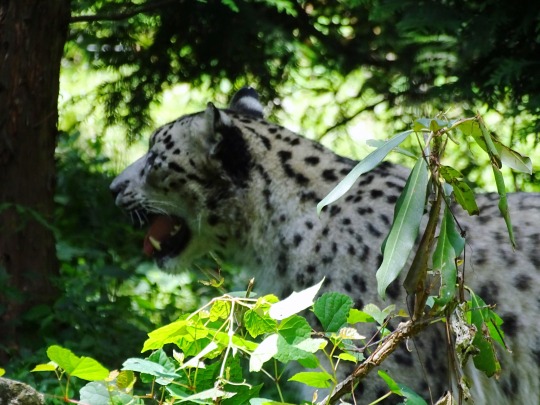


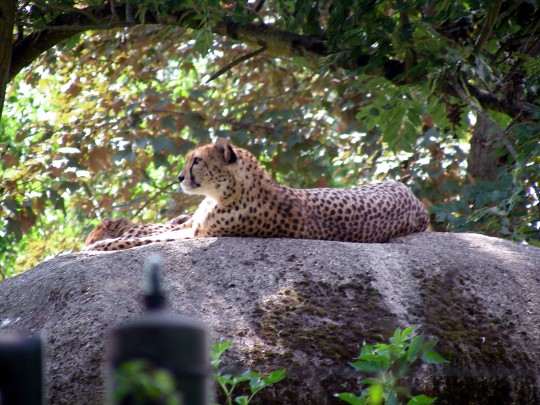

International Snow Leopard Day
Snow Leopards are captivating and powerful animals. However, they are also vulnerable to loss of prey and poaching. These animals are distributed sparsely across 12 different countries in Central Asia. They tend to be found in rugged, high mountain landscapes, at elevations between 3,000 and 4,500m. The key to protecting this species is raising awareness. That’s what International Snow Leopard Day is all about.
History Of International Snow Leopard Day
The first International Snow Leopard Day occurred on the 23rd of October in 2014. The main purpose of this day is to show the importance of snow leopard conservation and raise awareness about this incredible animal. The day also emphasizes the importance of taking measures to stop poaching, as well as consolidating efforts in terms of an environmental organization in the countries of the snow leopard range.
The day was initiated by the countries that encompass the snow leopard’s range. They include Uzbekistan, Tajikistan, Russia, Pakistan, Mongolia, Kyrgyzstan, Kazakhstan, India, China, Bhutan, and Afganistan. On the 23rd of October, in 2013, these countries signed the Bishkek Declaration regarding the conservation of the snow leopard. This happened in the capital of Kyrgyzstan, Bishkek, at the very first Global Snow Leopard Forum.
Fascinating Facts About Snow Leopards
Snow leopards are able to prey on animals that are up to three times their own body weight.
They have massive, thick tails, which are able to help them maintain balance and shield them from harsh weather. Their tails are almost as long as their entire body.
A study from the WWF has recorded snow leopards living at 5,859 meters above sea level. This is the highest altitude that has ever been documented for big cats. This is about the same height as the highest mountain in Canada.
You may be surprised to learn that snow leopards are not able to roar. Instead, they mew, yowl, and growl. They also prusten, which is also known as chuffing. This is a non-threatening vocalization, which is made when they blow air through their nose.
The fur on the stomach of a snow leopard is almost five inches thick. This is so that they can survive in the harsh and cold mountain climates.
These animals are often referred to as ‘ghosts of the mountain’ because they spend most of their lives in solitude and they are rarely seen.
Snow leopards are the only big cats that call Asia’s cold deserts their home. These deserts are sometimes referred to as the third pole because they feature ice fields with the biggest reserves of freshwater outside of the southern and northern polar regions.
What Threats Do Snow Leopards Face?
The exact number of snow leopards is unknown. Experts believe that there is no more than 6,390 snow leopards around the world, yet the number could be as small as 3,920. There are a number of threats that this elusive cat faces, including poaching. Data is hard to come by in this respect because a lot of trades with snow leopard parts occur in the dark. Some research shows that one snow leopard has been killed and traded every day between 2008 and 2016. However, the true extent of the issue is thought to be even bigger.
No animal should be poached, and this is why the likes of International Snow Leopard Day are so important so that we can raise awareness about the issue. Poaching is also a problem because it takes away resources for the snow leopard. The main prey species for the snow leopard are wild goat and sheep. However, these species are also threatened by unsustainable or illegal hunting in a lot of the parts of the snow leopard range. So, if there is a decline in their populations, there is also going to be a decline in the population of the snow leopard.
Snow leopards face a number of other threats that a lot of people don’t consider. For example, their mountain ecosystem could be destroyed because of large-scale developments, including mining. Climate change also poses a number of challenges as well. Temperatures are increasing in the mountains across Central Asia. This has an impact on the entire ecosystem; from water supplies to vegetation. It is certainly worrying times for snow leopards, and a good way to spend International Snow Leopard Day is by educating yourself fully on the issues these animals face.
How To Observe International Snow Leopard Day
There are a number of different ways that you can support International Snow Leopard Day. So, here are some suggestions…
Learn and explore – One of the best ways to observe International Snow Leopard Day is to learn about this incredible creature. Spend some time reading up on the snow leopard. Find out about where the animal lives, what threats they face, and what steps we can take in order to help safeguard the future of this incredible animal.
Get creative – Another way to show your support is to get creative. There are some activities online involving the snow leopard. You can find a fun activity sheet via the WWF website.
Order a WWF Explore Badge – Another way to show your support for International Snow Leopard Day is to order a WWF Badge. This is something else that you can get on the WWF website.
Adopt a snow leopard – You can also support snow leopards by adopting one. This helps the WWF to monitor snow leopard movements, by giving local communities the support needed to do this, as well as reducing human snow leopard conflicts.
Fundraise – You may also decide to host a fundraising event. This is a great way to raise awareness about the problems that snow leopards face while also accumulating donations that can go towards helping them. There are so many different ways that you can fundraise. You may decide to host a fundraising event, such as a cook-off, bake sale, or fun run. Another option is to make products that you can sell and then you could donate the proceeds or a percentage of them to helping snow leopards.
Source
#International Snow Leopard Day#23 October#Bronx Zoo#New York City#USA#summer 2019#original photography#InternationalSnowLeopardDay#outdoors#animal#flora#fauna#shy animal#tourist attraction#landmark#cityscape#nature#vacation#travel#world day#Zolli#Zoo Basel#Switzerland#Schweiz
5 notes
·
View notes
Text

The Majestic Bengal Tiger: A Symbol of Power and Survival
The Bengal tiger, also known as Panthera tigris tigris, is one of the most magnificent and powerful animals to ever roam the earth. Native to the Indian subcontinent, this majestic creature holds a special place not only in the wildlife of South Asia but also in the cultural and historical fabric of the region.
Origins and Natural Habitat
Bengal tigers have long been the apex predators of their domain, thriving in a wide range of habitats—from the dense tropical forests of India and Bangladesh to the mangrove swamps of the Sundarbans. Historically, Bengal tigers once roamed freely across much of South Asia, including present-day Pakistan, Nepal, Bhutan, and Myanmar. Today, however, their territory has greatly diminished due to human encroachment, deforestation, and poaching.
These tigers have developed remarkable adaptability to diverse environments. The Sundarbans, in particular, present a unique and harsh ecosystem—an endless maze of tidal rivers and mangroves where the tiger reigns supreme as the top predator. This specific population of Bengal tigers is also known for being more elusive and for swimming great distances between islands, showcasing their impressive strength and resilience.
Cultural Significance
The Bengal tiger is not just a creature of the wild; it holds deep symbolic meaning in many South Asian cultures. For centuries, it has represented power, courage, and the untamed forces of nature. In Hindu mythology, the tiger is often depicted as the vehicle of the goddess Durga, who embodies fierce protection and destruction of evil. Ancient kings of India also adopted the tiger as a symbol of their strength and dominance, often associating themselves with this majestic animal in their royal insignia.
Furthermore, the tiger plays an integral role in traditional folk tales and art across India and Bangladesh. The image of the Bengal tiger prowling through its jungle habitat has been romanticized, and its importance is reflected in everything from ancient cave paintings to modern-day cinema.
Conservation Challenges
Despite its revered status, the Bengal tiger has faced severe challenges over the past century. By the 20th century, the population of Bengal tigers saw a sharp decline due to hunting and habitat destruction. Trophy hunting, a popular pastime during British colonial rule in India, drastically reduced their numbers. Additionally, the rise of agriculture and urban expansion led to habitat loss, forcing the tigers into smaller, fragmented territories.
By the 1970s, their situation had become critical, leading to the establishment of Project Tiger in India. This ambitious initiative aimed at protecting and conserving the species through the creation of protected reserves and stricter anti-poaching laws. While these efforts have been met with some success, challenges remain, particularly in controlling illegal poaching and mitigating human-tiger conflicts.
One of the greatest modern threats to the Bengal tiger comes from the illegal wildlife trade, particularly for their skins and bones, which are highly prized in black markets. Additionally, human-tiger encounters have become more common in rural areas where habitat loss pushes tigers closer to human settlements. These encounters can often be fatal, both for the humans and the tigers involved.
Hope for the Future
Today, the Bengal tiger stands as a powerful symbol of conservation efforts. According to the World Wildlife Fund (WWF), there are an estimated 3,000 Bengal tigers left in the wild, with over half of them residing in India. Efforts are being made to protect their natural habitats and curb illegal poaching, but the battle is far from over.
What remains hopeful, however, is the growing global awareness of the need to protect these incredible animals. Ecotourism, stricter wildlife protection laws, and community-based conservation programs are all playing a part in safeguarding the future of Bengal tigers. The resurgence of the tiger population in certain areas, though small, shows that with collective effort, the Bengal tiger can once again flourish.
Conclusion
The Bengal tiger is not just a symbol of nature’s power; it represents the delicate balance between humans and the wild. Its struggle for survival mirrors the broader environmental challenges we face today—deforestation, climate change, and species extinction. By understanding and respecting the history of the Bengal tiger, we take a step toward ensuring its future and the preservation of the natural world.
Let us continue to admire and protect this majestic animal, not just for its beauty and strength but as a reminder of the deep connections we share with the wild places of the earth. The story of the Bengal tiger is one of resilience, and it’s up to us to ensure that this story continues to unfold for generations to come.
0 notes
Text
Social Work NGOs: Catalysts for Positive Change in Society
Social work NGOs (Non-Governmental Organizations) are pivotal in addressing social issues, advocating for marginalized communities, and fostering sustainable development. In a country like India, where socio-economic disparities are vast, these organizations are instrumental in bringing about positive change. This blog post explores the significance of social work NGOs, their areas of impact, the challenges they face, and their ongoing contribution to society.
Understanding Social Work NGOs
Social work NGOs are non-profit organizations that operate independently of government control, although they often work in collaboration with governmental bodies, international agencies, and the private sector. These organizations are driven by a mission to improve the lives of those who are disadvantaged, marginalized, or vulnerable. Unlike government institutions, social work NGOs have the flexibility to operate at grassroots levels, directly engaging with communities to address their specific needs.
The core objective of social work NGOs is to create a just and equitable society. They aim to provide services and support where governmental efforts may fall short, working tirelessly to uplift those who are most in need. Whether it’s through education, healthcare, women’s empowerment, or environmental conservation, these organizations play a crucial role in shaping a better future for all.
Key Areas of Impact
Social work NGOs work across a variety of sectors, each contributing to societal welfare in different ways:
Education: Education-focused NGOs work to ensure that all children, regardless of their socio-economic background, have access to quality education. Organizations like Pratham and Teach for India have made significant strides in improving literacy rates, reducing dropout rates, and enhancing educational outcomes in underprivileged areas. These NGOs often establish schools, provide scholarships, and introduce innovative teaching methods to bridge educational gaps.
Healthcare: NGOs like Smile Foundation and Doctors For You provide essential healthcare services in remote and underserved regions. They run medical camps, provide free or low-cost treatments, and conduct health awareness campaigns. By doing so, they significantly improve public health outcomes and ensure that even the most vulnerable populations have access to medical care.
Women’s Empowerment: Women’s empowerment NGOs focus on addressing gender inequality, promoting women’s rights, and providing opportunities for economic independence. Organizations such as SEWA (Self-Employed Women’s Association) and Snehalaya empower women by offering vocational training, financial support, and legal assistance. These efforts enable women to become self-reliant and challenge the social norms that perpetuate gender-based discrimination.
Child Rights: Child rights NGOs like CRY (Child Rights and You) and Save the Children India work to protect children from abuse, exploitation, and neglect. They advocate for policies that safeguard children’s rights and provide direct support through education, healthcare, and legal aid. Their work ensures that every child has the opportunity to grow up in a safe and nurturing environment.
Environmental Conservation: Environmental NGOs such as WWF-India and the Centre for Science and Environment (CSE) focus on preserving natural resources, promoting sustainable development, and combating climate change. These organizations engage in advocacy, research, and grassroots projects to address environmental challenges and promote conservation efforts at local, national, and global levels.
The Impact of Social Work NGOs
The impact of social work NGOs in India is substantial. These organizations have been instrumental in bringing about social change, improving the quality of life for millions, and fostering a more just and equitable society.
For example, education NGOs have played a key role in reducing gender disparities in education by ensuring that girls from marginalized communities have access to schooling. Healthcare NGOs have improved health outcomes in rural areas by providing necessary medical services and spreading awareness about preventive healthcare.
Women’s empowerment NGOs have not only helped women gain financial independence but have also challenged societal norms that perpetuate gender inequality. Environmental NGOs have raised awareness about critical issues such as pollution, deforestation, and climate change, influencing policy decisions at both the local and national levels.
Challenges Faced by Social Work NGOs
Despite their successes, social work NGOs in India face several challenges that can hinder their operations and impact:
Funding: One of the most significant challenges is securing adequate and consistent funding. As non-profit organizations, NGOs rely on donations, grants, and government support. However, funding sources can be unpredictable, and competition for grants is fierce. This financial instability can limit the scope and scale of their work.
Regulatory Hurdles: Navigating India’s complex regulatory environment is another major challenge. NGOs must comply with various laws and regulations, including the Foreign Contribution (Regulation) Act (FCRA), which governs the receipt of foreign donations. Compliance with these regulations requires significant administrative resources, which can be a burden for smaller NGOs.
Sustainability: Ensuring the sustainability of their programs is a critical concern for NGOs. Many organizations struggle to develop sustainable models of operation that do not rely solely on external funding. The challenge lies in finding innovative ways to generate income while staying true to their mission of social service.
Scaling Operations: While many NGOs achieve success at the local level, scaling their operations to have a broader impact requires substantial resources, expertise, and collaboration with other stakeholders. Expanding to new regions or increasing the scale of their programs can be a daunting task, particularly for smaller organizations.
The Path Forward
To continue making a meaningful impact, social work NGOs in India must focus on sustainability, capacity building, and strategic partnerships.
Sustainability: Developing sustainable models of operation is crucial. NGOs should explore social enterprises, where they can generate income while furthering their social mission. Additionally, forming partnerships with the private sector can provide much-needed financial support and expertise.
Capacity Building: Investing in capacity building is essential for the long-term success of NGOs. This includes training staff, improving organizational structures, and adopting new technologies that can enhance efficiency and effectiveness. Building a strong, capable team is critical for overcoming challenges and achieving lasting impact.
Strategic Partnerships: Collaboration with other NGOs, government agencies, and the private sector is key to scaling impact. By working together, organizations can pool resources, share knowledge, and implement more comprehensive programs that address the root causes of social issues.
Conclusion
Social work NGOs in India are vital to the nation’s development. They address critical issues that affect millions of people, working tirelessly to create a more just and equitable society. While they face challenges, their resilience, dedication, and innovative approaches have enabled them to make a significant impact. By focusing on sustainability, capacity building, and strategic partnerships, these organizations can continue to drive positive change and contribute to the overall progress of society.
0 notes
Text
MAN EATING TIGERS OF SUNDARBANS.
Hi Everyone, Welcome to my website and have fun. ❤❤❤😊😊😊
AN ARTICLE Photo by Pixabay on Pexels.com ( Reference : Wikipedia, WWF, and WorldAtlas.com) Introduction : The Sundarbans, a vast mangrove forest spanning India and Bangladesh, is home to the largest population of Bengal tigers. This unique and biodiverse ecosystem has long been known for its man-eating tigers, a phenomenon that has fascinated and terrified people for centuries. Tiger…

View On WordPress
0 notes